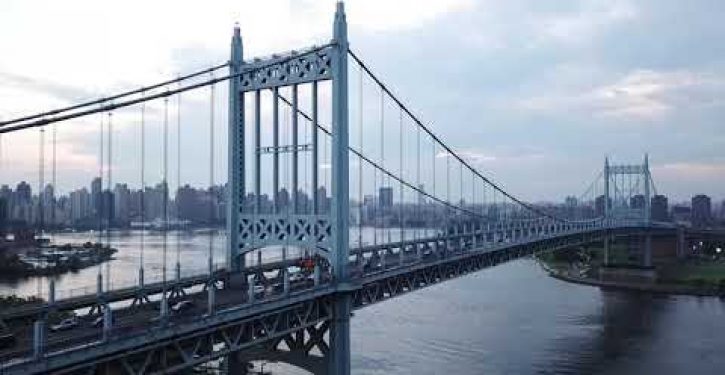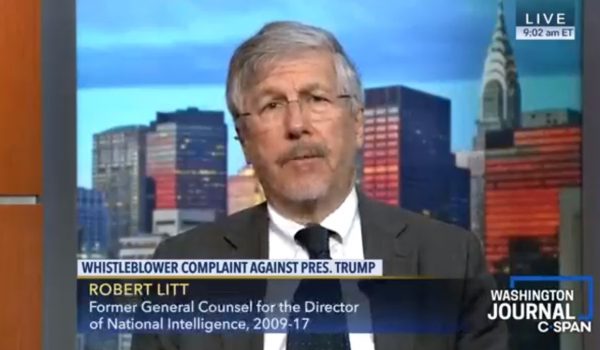
Black Lives Matter appears to be making progress on the statue defacement and renaming fronts. They still have yet to figure out how to take down way-larger-than-life “disgraces” like the Washington Monument and Mt. Rushmore, but give them time.
Meanwhile, as they go about destroying lesser works of public art, the day will arrive when there are no more memories of the Confederacy to eradicate, no more descendants of slave owners to erase. When that day arrives, they should feel free to turn to this handy list of historical figures and objects to obliterate from the collective American memory.
Bureau of Labor Management
Will this presidential election be the most important in American history?
Starting small, they could insist that the Bureau of Labor Management be renamed. The current title is often abbreviated BLM, which of course is taken.
On to larger fish.
Franklin Delano Roosevelt
Yes, Franklin Delano Roosevelt is a hero of the Left, having created the largest government bureaucracy in the history of the world. For blacks in particular, he issued Executive Order 8802, which created the Fair Employment Practice Committee (FEPC), which Wikipedia hails as “the most important federal move in support of the rights of African-Americans between Reconstruction and the Civil Rights Act of 1964. … The FEPC enforced the order to ban discriminatory hiring within the federal government and in corporations that received federal contracts. Millions of blacks and women achieved better jobs and better pay as a result.”
But Roosevelt has a few skeletons in his closet. One has to do with the aforementioned executive order:
In September 1942, at Eleanor’s instigation, Roosevelt met with a delegation of African-American leaders, who demanded full integration into the [armed] forces, including the right to serve in combat roles and in the Navy, the Marine Corps and the United States Army Air Forces. Roosevelt agreed, but then did nothing to implement his promise. It was left to his successor, Harry S. Truman, to fully desegregate the armed forces. [Emphasis added]
But FDR’s biggest sin of all was to imprison some 120,000 people of Japanese and American citizenship living on the West Coast during World War II. Roosevelt’s Interior Secretary Harold Ickes lobbied Roosevelt to release the internees, but Roosevelt did not act until after the November presidential election.
As to things named for FDR, take your pick. Washington, D.C. has a huge monument for the thirty-second president, and New York’s FDR Drive, which is often choked with traffic, is ideal for blocking by protesters.
Robert F. Kennedy
The brother of the nation’s much-beloved thirty-fifth president and himself a beloved figure has numerous schools and other buildings named for him. In 2008, New York City honored the one-time New York State senator by renaming the Triboro Bridge for him.
But as U.S. Attorney General, Bobby Kennedy “committed what is widely viewed as one of the most ignominious acts in modern American history,” according to The Atlantic:
[H]e authorized the Federal Bureau of Investigation to begin wiretapping the telephones of the Reverend Martin Luther King Jr. Kennedy believed that one of King’s closest advisers was a top-level member of the American Communist Party, and that King had repeatedly misled Administration officials about his ongoing close ties with the man. Kennedy acted reluctantly, and his order remained secret until May of 1968, just a few weeks after King’s assassination and a few days before Kennedy’s own. But the FBI onslaught against King that followed Kennedy’s authorization remain notorious, and the stains on the reputations of everyone involved are indelible. [Emphasis added]
Mohandas Gandhi
He was not an American, but the father of nonviolent resistance so admired by Martin Luther King is memorialized by a statue in New York City’s Union Square. But a movement is already afoot to tear that statue down because in his early years in South Africa Gandhi was a racist.
The Financial Times argues that Ghandi eventually came to see the light:
[B]y the time he left [South Africa], he was on the best of terms with Africans, including John Dube, the president of the movement that became the African National Congress.
But as we have seen repeatedly, the Left does not cut anyone any slack. Once a racist, always a racist.




